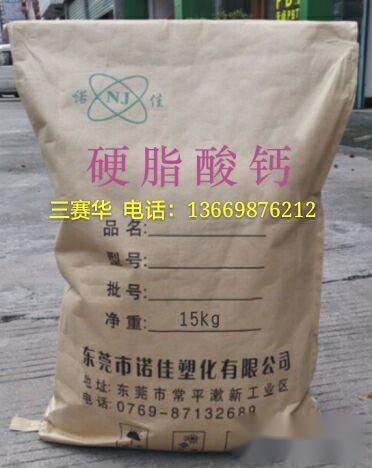|
Item |
Content |
|
Basic Information of Calcium Stearate |
|
|
Chinese Name |
硬脂酸钙 |
|
Chinese Alias |
Calcium Octadecanoate |
|
English Name |
Calcium Stearate |
|
English Alias |
calcium distearate |
|
CAS Number |
1523-23-0 |
|
EINEC Number |
216-472-8 |
|
HS Code |
29157090 |
|
Molecular Structure of Calcium Stearate |
|
|
Molecular Formula |
(C18H35O2)2Ca |
|
Molecular Weight |
607.023 |
|
Molecular Structure |
|
|
Calcium Stearate Physical Properties |
|
|
Appearance |
White Powder |
|
Melting Point (°C) |
149-155°C |
|
Metal Content% |
6.5±0.5 |
|
Loss on Heating |
≤2% |
|
Fineness (through 75μm sieve) |
≥99.5% |
|
Industrial Properties of Calcium Stearate |
|
|
Shelf Life |
2 Years |
|
1*20FCL (No Pallet) |
13 Tons |
|
Production Method |
Dry Process |
|
Packaging |
20kg |
|
Storage |
Store in a cool, dark place |
|
Annual Output |
8000 Tons |
This product adopts a double decomposition process, complies with national chemical industry standards, and serves as an efficient heat stabilizer and low-temperature processing lubricant,
widely used in non-toxic stabilizers for polyvinyl chloride, lubricants for polyethylene, ABS, and SAN resins, and release agents for transparent products.
Physical and chemical properties: white powder, insoluble in water, soluble in alcohol, decomposes in strong acid, and has hygroscopicity in the air.
Technical standards: HG/T 3667-2000
Advantages of this product
1 High product purity, low free acid value, good lubricity
2 Excellent lubricity improves product production efficiency, enhances product quality and quantity, and reduces overall costs for enterprises.
3 In rigid plastic products, it can increase the coagulation speed and can also be used for non-toxic soft films for food packaging, medical instruments, etc., while also having a stabilizing effect with good long-term stability.
4 Widely used abroad to enhance the heat resistance of plastics, improve weather resistance, initial coloring, and permeability, replacing toxic stabilizers with similar properties.
Applicable Scope
This product is a stabilizer and lubricant for polyvinyl chloride, suitable for non-toxic food packaging and soft films for medical devices. It can be used as a halogen absorbent in polyethylene and chloroprene to eliminate the adverse effects of residual catalysts on resin color and stability.
This product is also widely used as a lubricant for polyolefin fibers and molded products, waterproofing agents for waterproof and rainproof materials, and can also be used as lubricants and release agents for thermosetting plastics such as phenolic and amino, as well as thickening agents for greases, waterproof agents for textiles, and flatting agents for paints.














